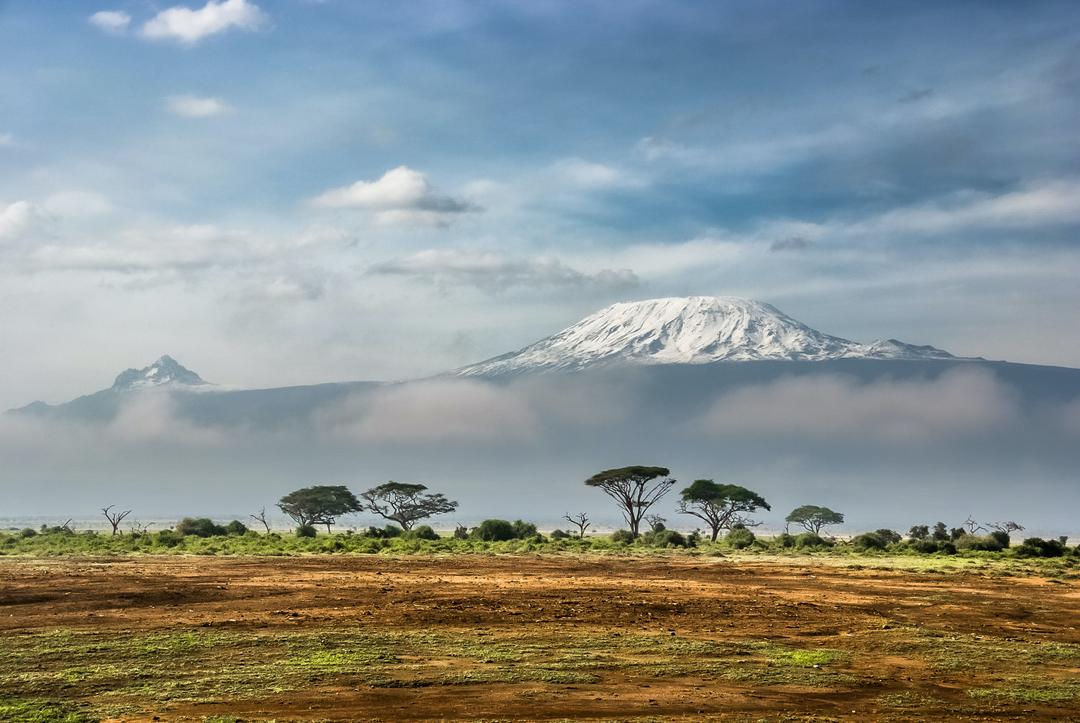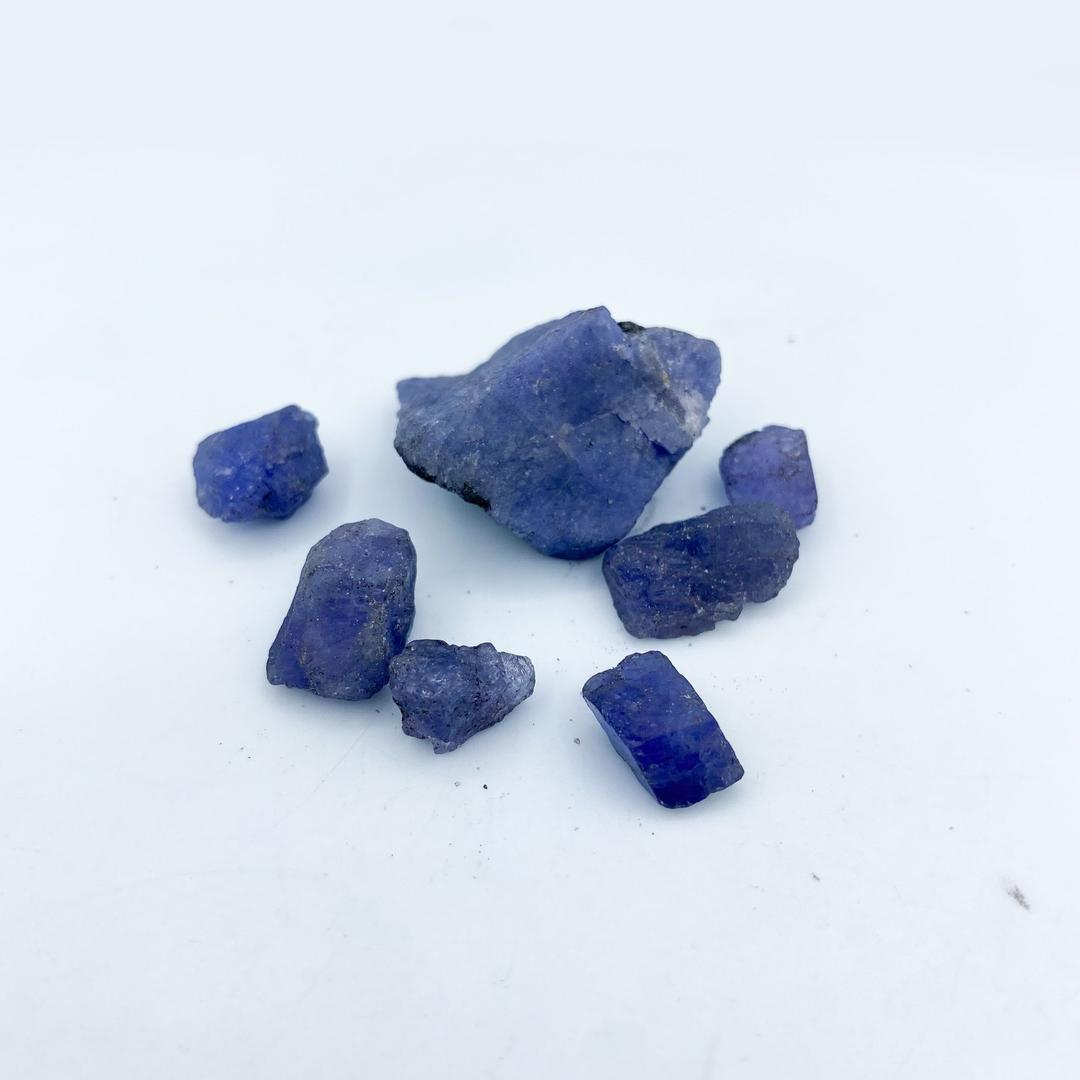What is Tanzanite?
What is Tanzanite?
Tanzanite is an alternative birthstone for the month of December and fashions anywhere from a rich violet color to a sharp cutting blue. It is an extremely rare gemstone because you can only find it in one place: the Merelani hills in northern Tanzania. Because this gemstone is only found in one place, with such a limited supply, people suspect that within the next couple of decades it will be gone.
Tanzanite isn't just a gemstone, however. It has an entire history and meaning behind it that many people don't know about.
Tanzanite's Origin
The only place you can find tanzanite is near Mount Kilimanjaro, Northern Tanzania. It was first discovered by Manuel D'Souza in 1967, though he incorrectly labeled it as sapphire because of its blue color. Eventually, it got out to the world that there was a new rare gem that could only be found in Tanzania. This rare gem was called zoisite, as it was made out of a variety of the mineral zoisite. Tons of people started putting claims into mining near Mount Kilimanjaro. They knew there was only a short supply of zoisite, and they wanted to get in on it quickly.
Tiffany and Co. got word of this new gem and decided they wanted to become the world's largest distributor of it. In 1968, they promoted their new collection of this stone. They renamed it tanzanite in honor of Tanzania. Henry Platt, president of Tiffany and Co, called it "the most beautiful blue gemstone to be discovered in 2,000 years." Everybody thought he was right, and thus the craze of tanzanite began.
The only place you can find tanzanite is near Mount Kilimanjaro, Northern Tanzania. It was first discovered by Manuel D'Souza in 1967, though he incorrectly labeled it as sapphire because of its blue color. Eventually, it got out to the world that there was a new rare gem that could only be found in Tanzania. This rare gem was called zoisite, as it was made out of a variety of the mineral zoisite. Tons of people started putting claims into mining near Mount Kilimanjaro. They knew there was only a short supply of zoisite, and they wanted to get in on it quickly.
Tiffany and Co. got word of this new gem and decided they wanted to become the world's largest distributor of it. In 1968, they promoted their new collection of this stone. They renamed it tanzanite in honor of Tanzania. Henry Platt, president of Tiffany and Co, called it "the most beautiful blue gemstone to be discovered in 2,000 years." Everybody thought he was right, and thus the craze of tanzanite began.
Tanzanite's Color
Tanzanite has a remarkable and brilliant blue color to it. This blue can turn into a bright violet if manipulated by a gem cutter to do so. The blue color comes from trace amounts of vanadium. Because tanzanite is a pleochroic gem, it can show different colors when put up to the light. This is why tanzanite can show as violet or bright blue. If turned a certain way, you might even see flashes of red. The brighter the gem, the rarer and more expensive it is. This is what makes tanzanite so attractive because it is not a subtle stone at all. It makes a bold statement and stands out against more common gemstones.
Gem cutters manipulate the color of this precious stone by using a heat treatment. When strong heat is applied to the stone, it brings out the pleochroic properties and bright colors. This heat treatment does not increase or decrease the value of the stone. When viewed in different directions, you can even see grey or bronze hues to it as well. This is why the cut of the gem is very important, so the eye can appreciate all the different colors that tanzanite offers.
Tanzanite has a remarkable and brilliant blue color to it. This blue can turn into a bright violet if manipulated by a gem cutter to do so. The blue color comes from trace amounts of vanadium. Because tanzanite is a pleochroic gem, it can show different colors when put up to the light. This is why tanzanite can show as violet or bright blue. If turned a certain way, you might even see flashes of red. The brighter the gem, the rarer and more expensive it is. This is what makes tanzanite so attractive because it is not a subtle stone at all. It makes a bold statement and stands out against more common gemstones.
Gem cutters manipulate the color of this precious stone by using a heat treatment. When strong heat is applied to the stone, it brings out the pleochroic properties and bright colors. This heat treatment does not increase or decrease the value of the stone. When viewed in different directions, you can even see grey or bronze hues to it as well. This is why the cut of the gem is very important, so the eye can appreciate all the different colors that tanzanite offers.
Tanzanite has a remarkable and brilliant blue color to it. This blue can turn into a bright violet if manipulated by a gem cutter to do so. The blue color comes from trace amounts of vanadium. Because tanzanite is a pleochroic gem, it can show different colors when put up to the light. This is why tanzanite can show as violet or bright blue. If turned a certain way, you might even see flashes of red. The brighter the gem, the rarer and more expensive it is. This is what makes tanzanite so attractive because it is not a subtle stone at all. It makes a bold statement and stands out against more common gemstones.
Gem cutters manipulate the color of this precious stone by using a heat treatment. When strong heat is applied to the stone, it brings out the pleochroic properties and bright colors. This heat treatment does not increase or decrease the value of the stone. When viewed in different directions, you can even see grey or bronze hues to it as well. This is why the cut of the gem is very important, so the eye can appreciate all the different colors that tanzanite offers.
Tanzanite's Meaning and Powers
Tanzanite has different meanings and properties that can be applied. Many people use gemstones for their healing properties and energy powers, and tanzanite is no different.
Spiritual, Emotional, and Physical Healing Properties
- Tanzanite transforms negative energy into positive energy, proving helpful to an individual's life.
- Tanzanite encourages the individual to express negative feelings and let out their troubles. This creates a more calming atmosphere for the individual and less stress.
- Tanzanite encourages higher consciousness and stimulation in one's life. It exuberates a calming and relaxing presence. This can be helpful for people that struggle with anxiety and stress.
- Tanzanite stimulates and unites the third eye chakra, heart chakra, and throat chakra. These chakras open up a world of spiritual energies and possibilities for the individual that uses tanzanite. Tanzanite is a great stone to use in the exploration of your own spiritual and psychic abilities.
- Tanzanite is said to help build up the body's immune system. It detoxifies the blood and promotes healthy cells, skin, and hair.
- It also believed to alleviate migraines and help high-blood pressure.
Is Tanzanite Worth More Than a Diamond?
Tanzanite is 1000 times rarer than diamonds. This is one of the most precious and sought-after stones in the entire world. It stimulates and promotes good energy and comes with an abundance of healing properties. Even though tanzanite is far rarer than a diamond, the price of tanzanite is much lower than diamonds. This is because the price of a diamond is controlled whereas for tanzanite, it is not. Diamonds are a bit harder than tanzanite, which in turn makes the former a bit more durable.
The Winter's Howl
If you are looking for a unique wedding band or simply want to add a pop of color to your hand, consider our Winter's Howl Glowstone Ring. Not only does it have tanzanite, it also incorporates a beautiful blue opal that has similar color changing properties that tanzanite offers. Tanzanite standalone is durable but can scratch more easily than other harder gems like Sapphire and Ruby. However, the Winter's Howl is housed in a scratch-resistant Tungsten-Carbide base with the tanzanite sealed off in the inlay, ensuring maximum protection and durability.
If you are looking for a unique wedding band or simply want to add a pop of color to your hand, consider our Winter's Howl Glowstone Ring. Not only does it have tanzanite, it also incorporates a beautiful blue opal that has similar color changing properties that tanzanite offers. Tanzanite standalone is durable but can scratch more easily than other harder gems like Sapphire and Ruby. However, the Winter's Howl is housed in a scratch-resistant Tungsten-Carbide base with the tanzanite sealed off in the inlay, ensuring maximum protection and durability.





















Leave a comment